#Iron Woodsman
Text
Requested by @marylongarms2
Been scrolling through your blog … notice you had an interested, so I grant you this!
Hope you have a happy day @marylongarms2

8 notes
·
View notes
Text


some old design brainstorming
maybe one day i will illustrate books for children, who knows
#orannge art#the wizard of oz#the wizard of the emerald city#волшебник изумрудного города#character design#you can probably tell that im really attached to the scarecrow and tin (iron if we talk about volkov's version) woodsman duo
27 notes
·
View notes
Text
Watching the Journey to the West 2010 adaptation and Wukong begs Sanzang to free him and that’ll he’ll protect him ect etc. There is some doubt that Wukong is lying, but Sanzang chooses to believe him.
I’m sitting there thinking ‘is that something the shows like to add or is that actually in the book?’
So I got get my copy of the first book and look it up. The answer is mostly yes. Wukong does his whole speech and Sanzang is delight to meet him. The hunter/woodsman asks if Wukong is lying and Wukong denies it. Sanzang frees Wukong.
Not once does Sanzang think Wukong is lying. He instantly believes him despite the fact he is trapped under a mountain for messing with the Buddha.
This is the first example of Sanzang’s blind faith that people are good, even demons, that they’re not going to lie to him to get what they want.
It is his blind faith that sets Wukong free and it is that same blind faith the puts him at odds with Wukong over and over again .
Wukong is agitated by that blind faith, the same blind faith that saved him in the first place.
Sanzang could have said ‘no, you’re a demon. You must be lying,’ and leave most definitely ending with his death somewhere.
But no, he believes Wukong and Wukong is truthful.
Think about it. This crazy monkey demon that turns out to be OP as hell that was trapped under a mountain for 500 years by the Buddha himself is telling you the truth. Blind faith scored you this kickass monkey. It’s just reinforces your blind faith is right.
Now I can hear you saying ‘he never believes Wukong again’ and you are absolutely right.
Here’s the thing, people don’t react well when someone tells them something they believe in is ‘wrong’.
Wukong repeatedly says that ‘this person is lying. Let’s not help them.’ (There’s usually more explanation than that.) Sanzang in turn thinks Wukong is lying because he’s contracting his belief, a belief that set Wukong free and though Wukong is ‘bad’ he is keeping his word by protecting Sanzang long the journey still reinforcing the Sanzang is right.
There are people who believe so strongly in their belief that not matter how much evidence you put in front of them won’t change their minds.
Sanzang was right once. Wukong was telling the truth when he said ‘free me and I’ll protect you.’ It wasn’t in a way Sanzang approved of, but he wasn’t lying.
Wukong is a walking example that Sanzang’s blind faith was right and can be right again. (I don’t think it was, however that’s not the point)
I think I lost where I was going with this.
I will reiterate that Wukong struggles with Sanzang’s blind faith but it’s that blind faith that saved him in the first place which is ironic as hell. That’s probably the whole point.
I would also like to say that I am not justifying or defending anyone’s actions. Everyone needs to go to therapy.
#journey to the west#sun wukong#jttw#Sanzang#Tripitaka#monkey king#why are all the wukong actors adorable?#wukong#suntang#sanzang x wukong#wukong x sanzang
86 notes
·
View notes
Note
Hello! That blue woodsman from you last shop update is gorgeous! How did you get such a rich blue?
So this is a mildly fraught question because that Woodsman is made from a black clay (aka a clay body heavily pigmented with iron oxide), which can react SUPER weirdly to glazes. What I'm saying is that it's been an Adventure figuring out what glazes to use on this clay & I've definitely had some disappointing results...

...but THIS GUY?? Not one of them!
The glaze I used is called Blue Cornflower by Coyote from their Enduro-Colour line & it totally sings on the black clay. Here's another sculpture I used it on (a very fun commission for a Manta Ray rolling tray, a.k.a. the Manta Tray):


Dreamy, eh?!
I'm also super jazzed because a bunch of my new Spectrum glazes look rad on the black clay -- here are a few of my favs:
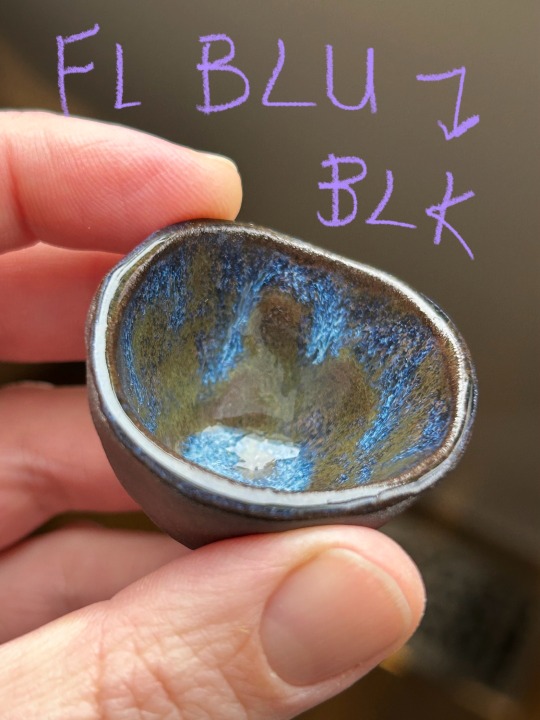
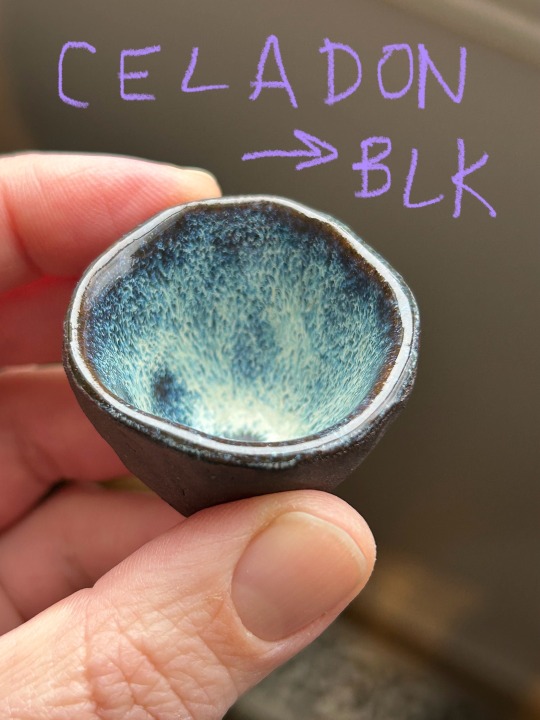
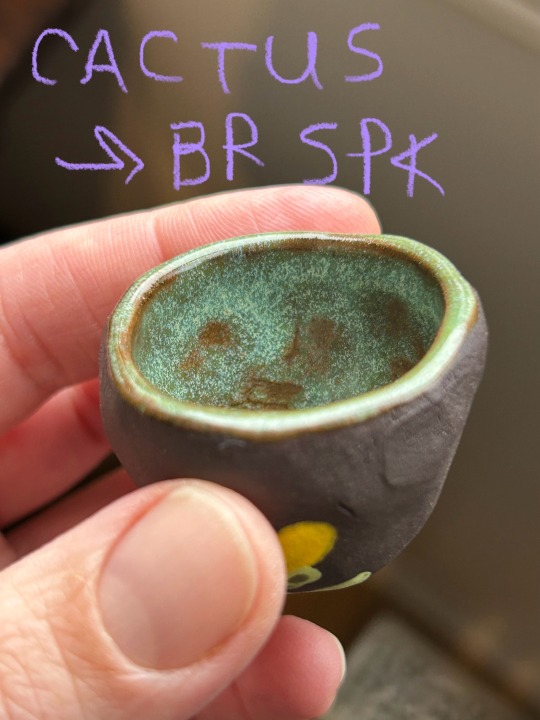

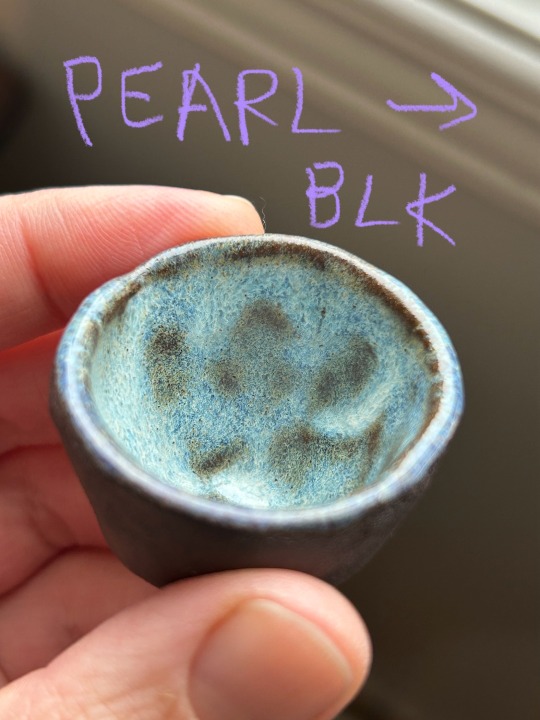
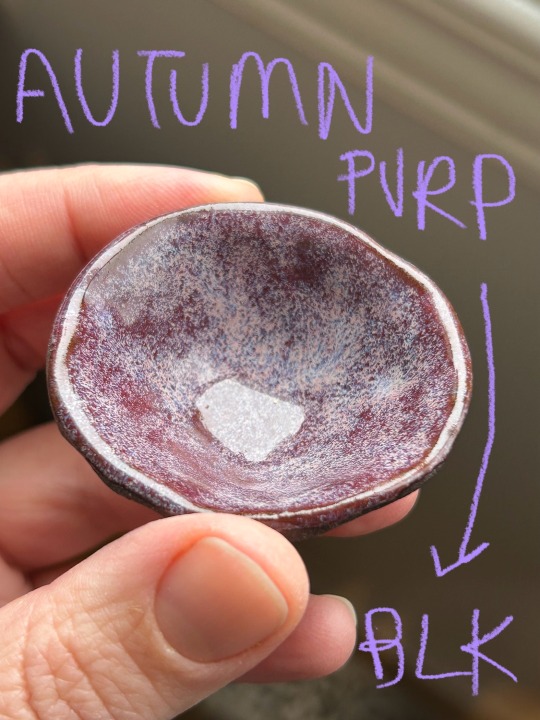
And finally (how do these get so long? It's certainly not my fault!), one of my fav unexpected successes is putting Amaco's Potter's Choice Seaweed on black clay. What's usually a lovely deep, sargasso-sea green becomes...agèd-looking, slightly shiny bronze?! Because pottery is magic & also alchemy?!*
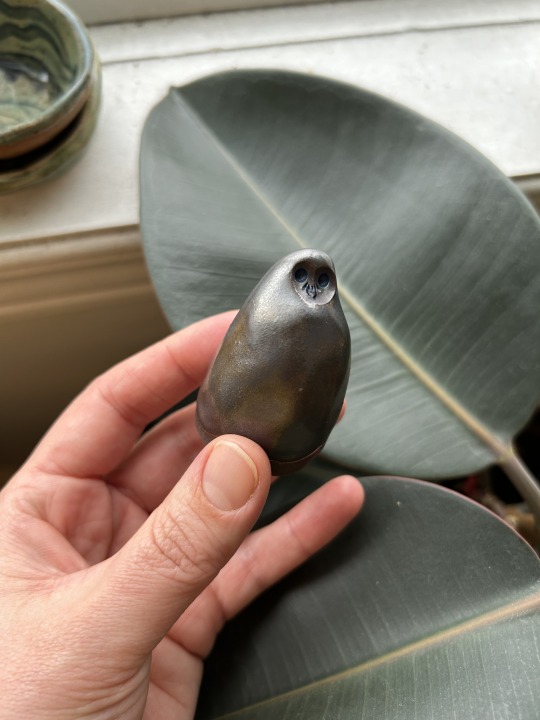

*I know it's actually chemistry, but I don't understand chemistry beyond a very basic level so to me? ALCHEMY!
#artblog#pottery#ceramics#handbuiltceramics#ceramicsculpture#ceramicart#handbuilding#clay#stoneware#ask#ask answered#glaze#glaze test
125 notes
·
View notes
Text
fuck it this WIP has been collecting dust on my laptop in photoshop for over a week at this point and I just have no willpower left to finish it so you're getting half-assed Oz AU art. anyways,
Behold: Pinocchicrow

aka the Reaper of the West, guard dog to the Wicked Witch
lore dump below the cut!
I took some inspiration for this version of P from several Oz retellings because I love a good mish-mash.
From the book/musical Wicked, I drew inspiration from the plot point where the Witch falls in love with a man named Fiyero who is captured and tortured for having ties to her. Out of love for Fiyero, the Witch transforms him into a scarecrow so he can no longer feel pain or die. So, that inspired some situation where P was near death and was granted immortality by the Witch in exchange for his servitude as a near-indestructible enforcer of her iron will. His title as Reaper of the West is spoken in hushed tones throughout Oz, a force great and powerful.
Also took some inspo from the play The Woodsman (which is a prequel about the origin of the tin man and it is HEARTBREAKING) in which it is said that the people of Oz stopped speaking entirely for fear of being overheard by the Witch, who spies on them through the eyes of crows. So P is always accompanied by his mechanical crow, Snarlspats (named after the witch from the book The Forgotten Witches of Oz).
The blades of the legion, which I've opted to affectionately name Fiyero, were of course built from remnants of the Emerald City, which has been overtaken by the Witch. Haven't drawn it yet, but I think he'd obviously wield an enormous scythe as his signature weapon with a blade sort of modeled to look like the head/beak of a raven.
#he can be a little evil as a treat :3#havent decided who the witch is#or if they would even be anyone we know in lop#Lies of P#lop#lies of p fanart#my art#WIP#Oz AU
99 notes
·
View notes
Text
Some scholarly notes about the Grimm fairytales (1)
Recently in France (well... for the last two dozen years), the publishing house José Corti has been specializing itself in scientific fairytales collections. While for the study of literary fairytales one would go towards Honoré Champion, when it comes to folktales and fairytales it is José Corti one must check. In their "Merveilleux" collection they have been publishing for the very first time in France or republishing out-of-prints collections of various European fairytales (from Denmark, Spain, Romania, and more) - with a few classics of the "literary" fairytales that marked deeply the evolution of the genre (such as Straparola's Facetious Nights or Ludwig Bechstein's fairytales).
All of that to say, José Corti has in 2009 published the most recent scientific (but for an all-public) edition of the brothers Grimm fairytales. The full collection of their fairytales, translated accurately in French, with annotations about their type/classification, their evolution throughout editions and their predecessors. I can't share all of these annotations with you, of course, but I can share a handful of them, about the most famous stories of the Grimm. They all come from the same person who translated the story in this edition: Natacha Rimasson-Fertin. (Of course my notes might be incomplete but hey, you'll have to buy the books to see the whole thing :p Or check them out at your local library)

The devil with three golden hairs (Der Teufel mit den dre goldenen Haaren)
This story is at the crossroa between the Aa-Th 461 "Three hair from the devil's beard" ; the AT 460B "The quest for fortune" and the AT 93à "Urie's letter/The prophecy".
In the 1812 edition, there were two different versions of this tale. Story number 29 "The story of the devil with three golden hair", told by Amalia Hassenpflug, and number 75, "The phenix", told by her sister Mary. In the second version the devil was replaced by a phoenix, and the hero had to get three feathers. In the 1819 edition the two stories disappeared and were replaced by the version we know today, told by Dorothea Viehmann. Another version that the Grimms had collected in 1812 had a princess falling in love with the woodsman that cuts a tree below her window.
The final episode, where the hero asks three questions to the devil through the old woman, echoes the Pentamerone's "The Seven Doves". Other versions of this story include Asbjörnsen-Moe's "The wealthy Peter Krämer", and Afanassiev's "Marco the Wealthy and Vassili the Unfortunate". The story of the brothers Grimm gathers several references to the Bible: the child throw in the water echoes Moses' abandonment, the letter meant to kill the hero is similar to the one David uses to kill Urie, finally the hair as holders of a being's wisdom and strength is linked to the legend of Samson and Dalila. But many other elements of the story evoke older faiths. The idea of a body of water as the frontier with the Otherworld can be found in the Classical Antiquity with the Greek Charon, and is found in other stories of the volume, such as "Frau Holle" and "The Iron Stove" - it as believed that water formed an obstacle spirits could not cross. The hero's mission recalls a tale of Saxo Grammaticus where Thorkill enters Utgard (the realm of supernatural beings) to steal a hair from the beard of Utgard-loki. The brothers Grimm had noted that the belief in the exceptional fate of a child born with a "hood" was also found in Iceland, where the "caul", called Glückshaut (skin of luck) was the home of a genie that would follow the child all of his life. And indeed, modern research has proven that the name given to this caul, the "fyljia" was also the name of a spiritual double, a tutlar spirit tied to a person or a family. This is why the tradition was to preserve and hide this "pileus naturalis" - in Belgium, it was called a "hem" and its color allowed for divination rituals about the child's future.
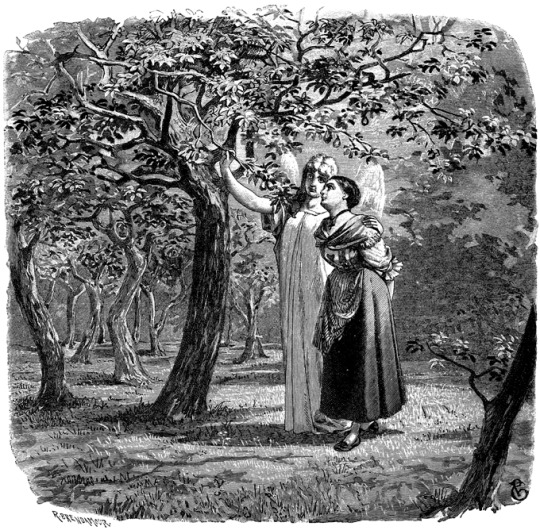
The girl without hands (Das Mädchen ohne Hände)
This fairytale is actually a cross between the AT type 706 "The maiden without hands" and the AT 930 "Urie's letter/The prophecy". The story was created by the brothers mixing two versions from Hesse, one told by Mary Hassenpflug, the other by Dorothea Viehmann. The second version lacks this story's introduction and begins with a father trying to marry his own daughter - when she refuses, he cuts off her hands and breasts, and chases her out of his house. It then follows the story. Meanwhile, the first version differs when the heroine is with her child in the forest: an old man tells her to hug three time a tree with her arms, which makes her hands grow again. He also tells her to only open the door of her house to one who will ask to enter "for the love of God" three times in a row - the king will be forced to do this before entering.
Outside of these two main versions, the brothers Grimm collected three additional ones. In the first, the angel that guides the girl is replaced by a small light that descends from the sky ; and the hands of the girl grow back when she plunges her arms in a stream after seeing a blind mouse enter its water to regain its sight. In the second version, a man is upset at his little girl praying for him day and night, but since she refuses to stop despite his demands, he cuts off her tongue. But she prays in thought and makes the sign of the cross, so he cuts off her right hand, then her arm all the way to the elbow, before banishing her. She is saved by a hunter that hides her in his master's domain and feeds her in secret with his master's dogs. When the master discovers this, he decides to raise the girl as his own child. One day she gives money to a poor man, who tells her she will regain her arm and tongue if she goes to drink of a certain stream, and he gives her a magical staff to protect her. When she returns at the lord's house, he marries her. The third version is about a queen banished by her husband with her two children, and is identical to the legend of saint Helen.
Other international versions of the tale include Zingerle's "The pretty daughter of the innkeeper", Basile's "Penta the one-armed girl" and Afanassiev's "The young girl without hands". There are some versions where it is a man that is mutlated, such as Afanassiev's "The brave without legs and the blind brave". The roots of this story date back to the end of the 12th century, and are located in southern England - this tale was the subject of numerous literary adaptations, the most famous being the verse romance of the 13th century "The Beautiful Helen of Constantinople".
The motif of the child sold to the devil is recurring among the Grimm fairytales - even though the character of the devil can be replaced by another supernatural being, such as in "Rapunzel" or "The Nixie of the Mill-Pond". The idea of offering the first thing one sees upon returning home is as old as the Ancient Testament (Judges). This story bears the signs of a heavy Christianiation, and was clearly inspired by the legend of Saint Genevieve of Brabant, falsefely accused of being unfaithful and condemned to death with her newborn child. The executioners take pity on her and she lives alone in the woods for seven years. As with other tales from the Grimm collection, this story mixes the Christian fantasy (the hands that regrow are treated as a Christian miracle) with pagan fantasy (there are several elements of folk-magic, such as the circle the girl draws around her to be protected from the devil, or the accusations of the queen giving birth to a changeling - a changeling also appears in the third story of "The Elves", KHM 39).

The Robber Bridegroom (Der Räuberbräutigam)
This story belongs to the fairytale type Aa-Th 955, named after it: "The robber bridegroom".
The tale was told to Jacob Grimm by Mary Hassenpflug, and was present as early as the 1810 manuscript. However this first version, that the brothers deemed "incomplete" was replaced from the 1812 edition onward by a new version which mixed two versions from Lower-Hesse. The brothers noted the existence of another version where the robber indicated the road to his house to a princess, by tying ribbons around the trees.
Ludwig Bechstein took inspiration from the brothers Grimm's tale to create his own "The Robber Bridegroom". This fairytale, like "Fichter's Bird", belongs to the "Bluebeard cycle" (several tales that the brothers removed from their first edition also belonged to this cycle).
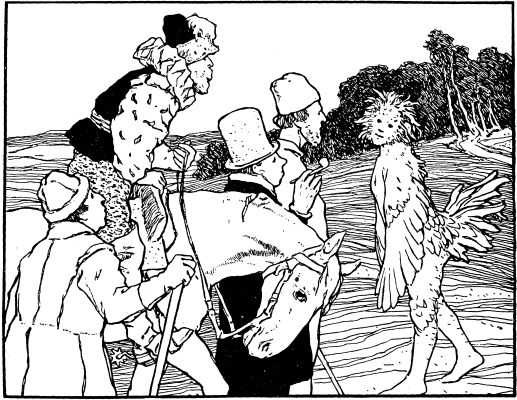
Fitcher's Bird (Fitchers Vogel)
This tale is a variation of the Aa-Th 311 "The heroine rescues herself and her sisters", usually classified under the "Bluebeard" category.
The final text of the Grimms is actually a mix of two different versions of the same story that was told to the brothers by both Friedrike Mannel and Dortchen Wild. The Grimms noted the existence of a version from Hanovre which goes as follow: a poor woodcutter asks his daughter to bring him his meal in the forest, and to show them the way he places peas on the floor. However dwarves notice this, and change the emplacement of the pea so that their path leads to their grotto. The older girl follows the peas, and become the dwarves' slave. Then we have the Bluebeard "forbidden room" motif, and the story goes as the "Fitcher's Bird" goes, as the dwarves lure the two other sisters to their cave. The last sister sticks the feathers on her body by rolling herself in blood (presumably the blood of the dwarves' victims), and there is no resurrection of the sisters. Everybody that meets her on the way call her "geputzter Vogel". The dwarves hunt the girl down and almost catch her just as she reaches her father's house - she is so fast in closing the door that it cuts a piece of her heel. The Grimms also knew of a Dutch version of the story, translated in German, and that was identical to one of their first-editions tales, "The Murder-Castle".
The translation of the name of the "bird" always caused many problems, due to the difficulty of understanding the expression. The brothers Grimm themselves explained the name of the bird by the Icelandic "Fitfuglar", meaning "birds that swim" - as such, the girl would be called "Fitchers-Vogel" because she looks like a swan". However, other people do not agree with this etymology, some linking Fitcher with "Fitze", the thread. Rimasson-Fertin highlights that the expression "Fitchers Fitze", outside of a simple sonority game, might be two variations of the male name Fritz (the diminutive of Friedrich) - other usual diminutives were Fitze, Fitz and Fiete. The brothers Grimm noted that the motif of the blood that cannot be erased was much older than Perrault's Bluebeard - it could be found as early as the "Gesta Romanorum", where a mother who had murdered her child couldn't erase three blood-drops from her hand, forcing her to wear a glove. This story must be compared to the KHM 40, "The Robber Bridegroom".

The Juniper Tree (Von dem Machandelboom)
It is the AaTh 720 "My mother killed me, my father ate me".
Just like the tale of "The Fisherman and his wife", this story was written by the painter P. O. Runge, and the brothers Grimm used it as a model for how they should present their own fairy tales. In fact, we can note sentences almost identical between the two tales.
The brothers noted a variation of the story where the stepmother places her daughter near the pot where her brother cooks, and she forbids her from looking inside. But since the pot boils too much, the girl lifts the lid - then her brother's hand reaches out to her from the cauldron. There is yet another version noted by the Grimm where there are three children, not two, and the stepmother sends them pick up strawberries in the wood, promising an apple to whoever comes back first.
The cruelty of this fairytale earned the brothers a serious criticism from Achim von Arnim - who only tolerated such violence because it echoed the one present in Goethe's Faust. The description "red as blood, white as snow" of course echoes the tale of "Snow-White". The brothers Grimm mentionned in their notes that the juniper tree was a plant believed to have the power to bring back youth - and Rölleke noted that the juniper-tree's red berries were used in folk-magic. It seems to be a very ancient tale due to several very old motifs such as the soul returning in the shape of a bird, a resurrection out of bones, and cannibalism. This tale must be compared to "Brother Lustig", "The Singing Bone" and, of course, "The Fisherman and his wife".

Briar Rose (Dornröschen)
Of course, it is the AaTh 410 "Sleeping Beauty".
This fairytale was present as early as the 1810 manuscript, written by Jacob Grimm from a tale told by Marie Hassenpflug. Research has proven that this story is derived from Charles Perrault's own Sleeping Beauty. We also find back in the German story a motif coming from another famous French literary fairytale, madame d'Aulnoy's "The Hind in the Woods/The Doe in the Woods" (also known as the White Doe). In this story a Crayfish/Lobster fairy announces to the queen she will have a child, and later the same fairy curses the princess as she is born - and what a coincidence! In the first edition of "Briar Rose", the animal that announces the princess' birth is not a frog... but a crayfish. Proving that there is a direct link. As for the name of the princess n German, "Dornröschen", "small briar rose", it actually first appeared in the German translation of a 1730 fairytale by Anthony Hamilton (an Irish man who however spoke and wrote French), "Fleur d'épine" (Thorn flower/Briar flower) - it had been translated in 1790. Bolte and Polivka have also noted a comedy by Gryphius from 1660 whch was named "Die geliebte Dornrose", "The beloved briar rose".
In their notes about the fairytale, the Grimm brothers explicitely compare Briar Rose to the legend of Brunhild asleep behind a wall of fire, cursed into a magical slumber by Odin's "sleep-thorn" and woken up by Sigurd, the only one able to cross the wall of flames. The brothers Grimm were also aware of Basile's version of the story, "Thalia, Sun and Moon", which they compared to their own Briar Rose in their notes. The brothers were very fascinated by the consistant naming of the princess' children from Perrault (Dawn, Day) to Basile (Sun, Moon) and compared it to the occurences of "Day, Sun and Moon" as names within the Eddas. However we know that Perrault was heavily inspired by Basile's story when writing his own Sleeping Beauty, and only modified some parts so as to erase the more shocking and "unpleasant" parts (such as the married prince having sex with the sleeping girl). Of course, this story is also to be compared with the 14th century medieval tale of the Roman de Perceforest.
The wise women that appear in this story are the Germanic equivalent of the fairies. In fact, we know that the brothers Grimm carefully avoided (or erased) any mention of "Fee" (the German word for the English "fairy" and French "fée") from their tales, so as to better differentiate them from the French "fairy tales", "contes de fées". By turning the fairies into wise women making predictions at the child's birth, the Grimms notably opened an entire set of symbolism and interpretations linking them to the mythological figures of the Norns, Parcae and Moirai.
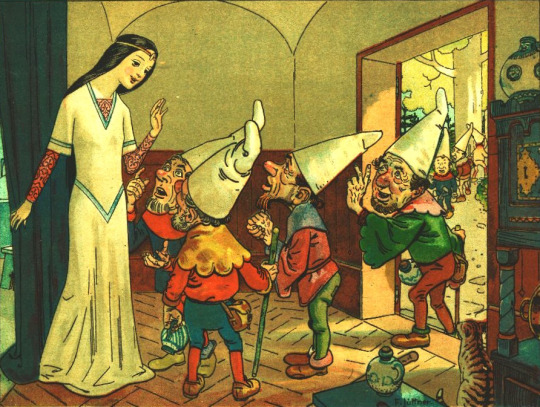
Snow White (Schneewittchen)
Of course, it is the AaTh 709 "Snow-White".
The full editing history of this tale was only "recently" recreated (the book was published in 2009, it was recent back then) in its entirety. We know that it begins in 1808 with a version collected by Ferdinand Grimm, brother of Jacob and Wilhelm, called "Schneeweibchen". It seems Ferdinand might have invented the story on his own. Wilhelm and Jacob then slowly modified it, by adding details from other collected versions, before publishing it in their first edition in 1810 (they did note at the time that it was a Lower-Germany story, and that in Upper-Germany the tale did exist but with the deformed name of "Schliwitchen". When the Grimms did their second edition, the main change they performed onto this story was the modification of the wicked mother into a wicked stepmother - something they also did for "Hansel and Gretel". In fact, from edition to edition the Grimms kept adding adjectives and expressons highlighting the opposition between the girl and the vain queen.
Th Grimms had collected several variations of the tale. One was much closer to the tale of "The Juniper Tree" and in it the queen, as she was with the king on a hunting sled, cut her finger while peeling an apple. In another variation the king and queen were walking by three mounts of snow, than went by three pools of blood, and finally saw three ravens in the sky, and each time the king wishes for a girl with the corresponding colors - soon afterward the couple encountered a little girl fitting this description. The king, immediately attached to her, takes her with him in their royal carriage, but the queen immediately hates her and tries to get rid of her - so she asks the girl to go seek a glove she threw out of the window, and while she is out of the carriage she asks the driver to leave as fast as he can. Then the little girl takes refuge at the seven dwarves' house.
The fairytale existed in German literature before the brothers Grimm published it. Indeed J. A. Musaüs had published in 1782 a fairytale called "Richilde" - and the Grimm were influenced by this tale, since in the margins of their first edition, they noted about Snow-White "It is Musaüs' Richilde". There was also a Snow-White story that had been published in 1809 in a fairytale book by A. L. Grimm (no relationship to the brothers Grimm). The Brothers Grimm did note the striking similarity between this story and the Norse pseudo-historical legend of Snäsridr, the beautiful wife of "Harald with fair hair", a wife that, when she died, stayed in her prime state so that it seemed she was still alive.
This fairy-tale has a very wide area of spreading, as it can be found from Ireland to Turkey passing by central Africa. It is especially present in the literary Italian compilations of fairytales. Basile has three variations of the story in his Pentamerone: "The raven", "Nennillo and Nennella" as well as "The she-cook".
The various virtues that Snow-White shows in this tale made her one of the big role models within the education of bourgeoisie girls in the 19th century - alongside Cinderella, of course. In fact, according to H-J Uther's analysis of the story, it is because of all her virtues that Snow-White's beauty does not fade away and stays undamaged even in death, unlike her wicked stepmother whose vices causes the fading of her charms. Finally, this fairytale is actually the proof that the brothers Grimm did not simply listed their fairytales one after the other in a random order, but deliberately created "bridges" and internal references to create a cohesive world within their book. Indeed, the mention of the snowflakes looking like feathers references "Frau Holle", while the glass coffin can be found back in, of course, "The Glass Coffin", and the blood-drops on the snow evokes "The Juniper Tree".
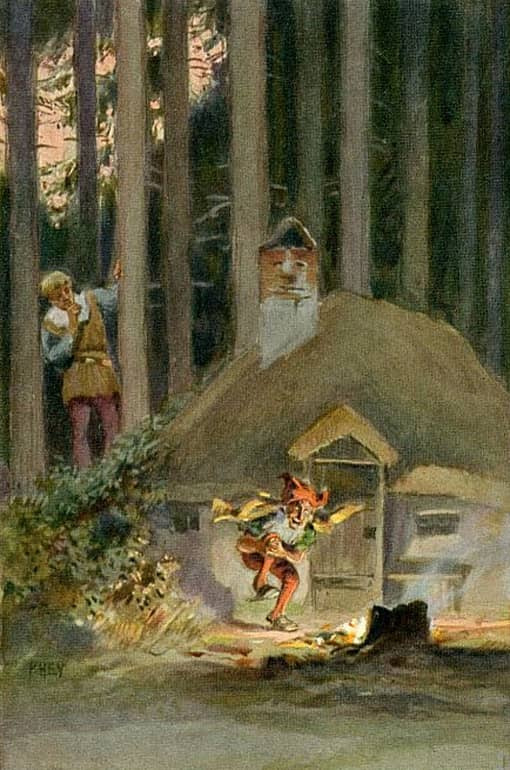
Rumpelstilzchen
Yes this story is the famous "Rumpelstilskin" (or Rumpelstiltskin? I never know how to write it in English). But why keep the German spelling? Because Rimasson-Fertin has some stuff to say about it: this name is the diminutive form of "Rumpelstilz", a term that Jacob Grimm defined in his "German Dictionary" as being synonymous with "poltergeist" (he noted a similarity between Poltergeist and Rumpelgeist, both designated a very loud spirit). While today "poltergeist" is mostly associated with ghosts, in a much broader way it designate a dwarf, a dead or a devil - or just any kind of phenomenon caused by witchcraft.
This story corresponds to the AaTh 500 "The name of the supernatural being". This fairytale has an interesting evolution history... Jacob Grimm had a version of it as early as 1808, named "Rumpenstünzchen", which was then slightly modified for the 1810 manuscript. This tale was actually the mix of two different versions - and one of these versions had a different ending. The queen didn't sent messengers searching for the dwarf's name, rather the king spotted the little man while returning from hunting on the third day. The Grimm also noted a variation where the initial situation was reversed: a young girl who had to spin hemp but could only manage to spin gold much to everybody's despair, and a small man appeared to promise her a wedding to a king's son in exchange for her firstborn child. It ended in such a way: the queen herself spotted the small man singing his name, jumping around a fire while riding a ladle like a horse. When she guessed his name, he flew out of the window and into the sky, riding the ladle like a witch's broom. We know that the episode of the spinning of the straw was only added by the Grimm in 1812 (it is not in the 1810 version), and that the final scene of the dwarf self-mutilating comes from a story of Lisette Wild and was added in 1819.
The first literary record of this story is a French fairytale published in 1705 and written by Mlle Marie-Jeanne L'Héritier de Villandon. It was "L'Histoire de Ricdin-Ricdon" (The Tale of Ricdin-Ricdon), published in her "La Tour ténébreuse et les jours lumineux" (The Shadowy tower and the luminous days). It had been translated in German by Johann Gottwert Müller in 1790, under the title "Straubfedern", "Ostrich feathers". As for the name "Rumpelstilzchen", it actually originates from Johann Fischart's Grman adaptation of the French "Gargantua", "Geschichtklitterung" (1584) - in it, Fischart lists various children game by name, and mentions a "Rumpele stilt oder der Poppart".
This fairytale type is very present in Western, Central and Northern Europe (British Isles and Ireland included), with also a few spottings in the Baltic countries, China and Japan. The name of the supernatural being always changes from one region or country to the next (in Swiss it is Hans-Öfeli, in Dutch Trillevip, in Swedish Titteliture, in Finnish Tuttirituli, in the Suffolk it is Tom Tit Tot, in Welsh Gnarwynathrot, in Irish it is Eve-Trot or Trit-a-Trot...). It is part of the enormous success of this tale-type: every country has to invent its own brand of nonsensical, un-guessable name. As for the rhymed song through which the dwarf betrays its name, it is found in England as "Nimmy nimmy not / My name is Tom Tit Tot", and in an Afro-American version of North Carolina "I'm so glad that she do not know / That my name is Tabutoe Tambutoe".
The brothers Grimm noted that in Germanic mythology it was typical for underground beings (aka dwarfs) to have names that are not usual among humankind, which is why, again according to them, the dwarf of this story would feel in perfect safety proposing the queen such a game. The rule according to which obtaining the name of a supernatural being means gaining a form of power over them is very common, and is even reused in another one of the Grimm stories: KHM 136, "Iron John". H. Rölleke did an analysis of the names the queen proposes at first: we have the three names of the Magi, aka the Three Wise Men, or King-Magi, which gives a Christian setting to the story, and could also serve as a metonymy for all the saint names found in the Christian calendar. As for "Heinz" and "Kunz", Rölleke sees in them the diminutives of the names of the medieval emperors Heinrich and Konrad, which used to be some of the most popular male names among German-speaking countries.

All-Kinds-of-Fur (Allerleirauh)
It corresponds to the AaTh 510B "The dresses of gold, silver and stars", also known as "Donkey Skin", after the famous Charles Perrault fairytales.
The story we read today was the one told to the Grimm by Dortchen Wild, but there was a variation of it told to the brothers by Jeannette Hassenpflug, "Princess Mouse-Skin", which was present in the 1812's edition of the volume (n°71) but was then moves to the annotations as a mere mention. The version of the story from the first draft (the 1810 manuscript) was called "Allerlei Rauch", "All Kinds of Smoke", and was heavily inspired by one of the tales present within the novel "Schilly" by Carl Nehrlich.
The line "God forbade a father from marrying his daughter. Nothing good can come from this sin which will cause the kingdom's decadence" was added in the 1819 edition, and references a tale of Albert Ludwig Grimm called "Brunnenhold und Brunnenstark". The brothers Grimm insisted even more on the condamnation of the sin of incest when rewriting the story for their "small collection" for kids, and also insisted heavily upon a political extension of such a decision, which would damage the state itself. It is actually an allussion to the failure of the Frankfort Parliament, which had been gathered in 1848 at the Paulskirche in an attempt to create a constitution for all of Germany - to which Jacob Grimm had taken part.
A variation of the story collected in Paderborn has the last coat made of all the furs of the kingdom, plus moss and various forest-related material. In this version, the heroine puts the cloak on top of her three beautiful dresses before fleeing, and she hides in an empty tree where she is discovered, not during a hunting party, but by woodsman that cut off the tree she was sleeping into, to bring wood to the king. All-Kinds-of-Fur works in the castle's kitchen but one day as she is preparing the soup, the king has her sit on his chair so she can delouse him (a motif also present in "The Devil with Three Golden Hair). As she does, the king glimpses the beautiful shining dress under the cloak's sleeve, and this is how he discovers the girl's true appearance. Another variation of the story yet, also collected in Paderborn, has the heroine pretending to be mute. One day the king hits her with a whip, it rips apart the coat, revealing the golden dress underneath.
Not all the German versions of the story include the incest motif. In Musaüs' take on the story, "Die Nymphe des Brunnens", "The Nymph of the Well", the heroine leaves her father's castle because it has been destroyed. Her godmother, an undine, gifts her a small magical box and when she leaves the ball she says "Night behind me and day before me / Might nobody see me!". As for the version of Hassenpflug, "Princess Mouse-Skin", it begins as the KHM 179, "The Goose-Girl at the Well": a king wants to know which of his three daughters love him the most, the first says she loves him more than the whole kingdom, the second more than pearls and precious stones, the third more than salt. The furious father has the last princess be sent into the woods to be killed, but the servant tasked with the execution spares her out of pity, and gives her, by her request, a coat made of mice skin. The rest of the story goes like within "All-Kinds-of-Fur", except for the final wedding, to which the father-king is invited. All the dishes served to him are without salt, and he ends up saying he prefers to die rather than continue eating without salt. The princess-daughter reveals herself and points out how he tried to had her killed for loving him more than salt. Her father begs her for forgiveness, and the tale ends with her accepting.
The motif of the incest can, however, be found back in a variation of the KHM 31 (The Girl Without Hands) that the Grimms collected, and where the father mutilates the daughter for refusing to marry him. The motif of the king trying to marry his own daughter has been attested in many, many European stories ever since the 12th century. As for the boots that are thrown in the heroine's face in the Grimm story, while in the final edition it has no follow-up, in the 1812 edition it was a recurring element forming a motif within the tale. Another German version of the story that preserved this structure that the Grimms erased is the story collected by Vernaleken, "Throw-Broom, Throw-Brush and Throw-Comb". In it the king throws out of anger at the face of the heroine (Adelaide) a broom, a brush and a comb. Every time she goes to the ball, she changes her pseudonym to fit which item hit her (one night she is "Throw-Broom", another she is "Throw-Brush", etc...). There are many, many variations of the story containing such a "name play".
Other famous examples of this variation, outside of Charles Perrault's Donkeyskin, include Straparola's "The maiden in the chest", Basile's "The She-Bear", Afanassiev's "Pig-Skin".
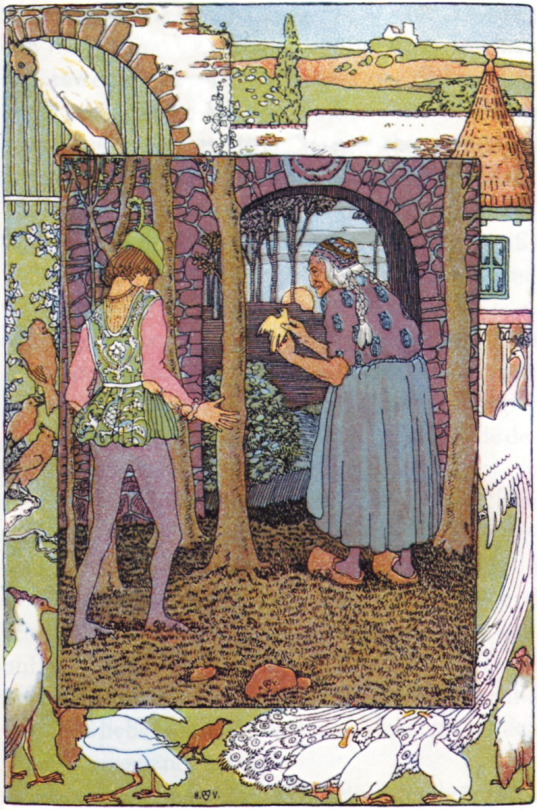
Jorinde and Joringel (Jorinde und Joringel)
It corresponds to the AaTH 405, named and created after this story, "Jorinde and Joringel".
The interesting thing with this story is that the brothers Grimm did not collect it from a direct source. Rather they lifted it, to the exact word, from the autobiography of Johann Heinrich Jung, "Jugend/Youth", published in 1779. The brothers deemed that the way Jung-Stilling had written the tale was the "perfect" way to tell the story, according to their definition of a fairytale. Though they did note the existence of a version of the story told in Schwalm - but which differs very little from the story of Jung-Stilling.
The brothers Grimm themselves noted a similarity between this story, and the KHM 123, "The Old Woman in the Wood". Rimasson-Fertin notes that the witch in this story is to be compared to the ones appearing in "Hansel and Gretel" and in "Little Brother and Little Sister". As for the name of the demon the witch invokes, "Zachiel", H. Rölleke identified it as a form of "Zachariel", a demon name coming from the very popular 17th century demonology grimoire "Clavicula Salomonis", "The Clavicles of Salomon".
#brothers grimm#grimm fairytales#brothers grimm fairytales#german fairytales#sleeping beauty#briar rose#snow-white#snow white#jorinde and joringel#all kinds of fur#the juniper tree#the devil with three golden hair#the three golden hair of the devil#the robber bridegroom#the maiden without hands#the girl without hands
42 notes
·
View notes
Text

“You are more lost than you realize.”
That’s ironic coming from you, Woodsman.
#pokemon#pokemon legends arceus#pokemon black and white#pokemon black 2 and white 2#submas#under the city streets au#subway boss ingo#warden ingo#woodsman ingo#coramatus's artwork
158 notes
·
View notes
Text
My interpretation of otgw and my theories
●First of all im pretty sure most people know that it is supposed to be like Dante's inferno
Wirt (and Greg) are Dante
Sara is Beatrice
Ironically Beatrice is closest to virgil.
● I at least like to believe that the unknown is real and I have a couple of actual reasons why aside from just wanting it to be real
One we see what happened to the characters from the unknown Beatrice, the woodsman, auntie whispers,ect
Two Jason funderburker glows because of the bell
Three we see endicott's grave (which I will bring up again later).
● the unknown is either purgatory or hell maybe a little bit of both.
● this is less of a theory and more of an au that I thought of that I haven't seen anyone else talk about or think of
Beatrice's family and the corduroy family are related. That's it that's the whole idea.
● I like the theory of everyone in the unknown being dead
Like I said we see endicott's grave in episode 9 (which also makes that whole "so you're not a ghost" thing wrong at least a little)
Also like I said the unknown is either purgatory or hell probably a combination of the two so it would make sense for everyone to be dead
And we literally see living skeletons so yeah
●someone pointed out that in Dante's inferno they say that suicides take form of trees and...

Yeeaahh...
FUCK
●this is not necessarily just about over the garden wall but
PRIME'D CATRA SHOULD BE INCLUDED IN BAD END FRIENDS
●I hate the idea of wirt being related to the pines family because I ship pinescone
Also at most there's a three year age gap between dipper and wirt and I think it's less
●"I don't really like labels i-i'm kind of just me" QUEER WIRT
●I love and hate the idea that Greg has been to the unknown before because as much it would make sense that would mean that either Greg has died before or had a near death experience before
●less of a theory more of a fact but the fight is over is about drowning
●I don't like the theory of Greg being Greg universe.
One Greg never mentions having a brother
Two Greg is a much happier kid than Greg was, like Greg talked about how not super happy his childhood was
●wirt's costume is very similar to the Dante's costume in Dante's inferno
● MAN I LOVE DEPRESSED/SEWERSLIDEAL TEENS

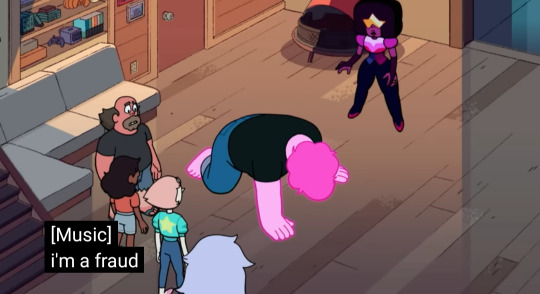


●i love Greg
And I feel bad for the woodsman
I love Jason funderburker (frog)
I love Lorna and auntie whispers
I love Beatrice
I love wirt
●Bad end friends reminds me of nicktoons unite
●"I was never any good to him alive either" I SWEAR WIRT WAS AT LEAST I LITTLE SEWERSLIDEAL
#over the garden wall#otgw#dante's inferno#gravity falls#steven universe#cartoon network#luz noceda#hunter noceda#dipper pines#bad end friends#pinescone#wirt over the garden wall#greg over the garden wall#beatrice over the garden wall#auntie whispers#lorna over the garden wall#i love greg so much#catra applesauce meowmeow#chipped catra#its a rock fact#we came to burgle your turts#jason funderburker#i love jason funderburker the frog#the unknown#i love auntie whispers
49 notes
·
View notes
Text
HOTTEST MONSTER POLL ROUND 1

as you can see, the first round will consist of 40 POLLS!! Thats a lot!! Because of that starting number, by the quarter finals we'll be down to 5 polls, meaning the semi-finals will have 3 polls, with the middle branch being supplemented with a redemption round that we'll do between the quarters and semi!! All of this will end with the hottest kind of Final: a three-way!!
Some quick rules before I list the polls!!
Propaganda is allowed and appreciated (be it reblog or ask), but please keep it mostly civil and non-pornographic!!
This first round is 40 polls, which is a huge chunk towards post limit, so I wont be able to reblog/respond to everyone!!
I'm also just one genderfreak running this so please bear with me if any weirdness occurs, this is a lot to keep up with!!
ANYWAYS HERE ARE THE POLLS
Dead Justice vs Dapper Jack
Maldor vs Nightfright
Crystal vs Possessed Mary Jane
Sarah Ravencroft vs Werecats
Amy the Siren vs Beach Beastie
Woodsman vs San Franpsycho
Crimson Witch vs Yowie Yahoo
Medusa Monster vs Arachne
Lady Vampire vs Vanna Pira
Ghost Witch of Salem vs Nekara
Chip Braverton vs Ben Ravencroft
Al Cabone vs Old Iron Face
Dandy Highwayman vs Bram
Phantom Virus vs Ice Demon
Captain Cutler vs Bingo Belle
10,000 Volt Ghost (SD2) vs 10,000 Volt Ghost (TSDS)
Inferno vs Goblin King
Jaguaro vs Scarebear
Junk Robot vs Charlie the Haunted Robot
Crystal Crawler vs Dream Weaver
Dracula (Reluctant Werewolf) vs Dracula's Wife (TNSDM)
Werner Wolf vs Papa Werewolf
Aliens (Alien Invaders) vs Star Creature
Headless Horseman (GK) vs Phantom (MI)
Ms Grimwood vs Revolta
White Farm Werewolf vs Fiend
Skeleton Men vs Skeleton Band
Ebeneezer Crabbe vs Elias Kingston (Be Cool!)
Phantom (Stage Fright) vs Boogedy Bones
Screama Donna vs Snow Ghost
Cliff Bride vs Aphrodite
Yeti (Be Cool) vs Abominable Snowman (Chill Out)
Snow Monster vs Snow Creature
Chickenstein vs Diabolical Disc Demon
Queen Morbidia vs Norma Deathman
Proffessor Huh? vs The Freak of Crystal Cove
Slime Mutant vs Tar Monster
Morgan Le Fay (Sword and the Scoob) vs Dryad (DC Comics)
Scarecrows (WNSD) vs Fish Creature (WNSD)
No-Face Zombie vs Masked Figure (SD2)
If for whatever reason I cant get links to work on here, each poll will be tagged # "hottest sd monster poll" and # "Round 1"
44 notes
·
View notes
Note
So let me get this straight: We know Ruby alludes to Red Riding Hood, so if she were to take the Rusted Knights role... would she become Red Riding Hood's grandmother or something?
It would actually be kinda ironic if she actually became the Woodsman or in some way, the Big Bad Wolf themselves- the first one is for heroic purposes and the second one is an open possibility for so much angst, probably :')
13 notes
·
View notes
Text

I grew up on volkov's version so im really biased + i loved the stop motion series as a kid
some design notes under the cut

This is Ellie. I thought giving her a blue outfit would be nice (blends in with the munchkin fashion nicely) and also serves as a good homage to the Oz origins

I subconciously pulled some inspo from herdier's design with the floof. oops

Vladimirsky's version of Strasheela is great ngl, im totally using that as the baseline. I also thought about making his eyes change color between journeys from blue to green once Ellie and friends reach the Emerald City, to purple when they leave the Purple land and to green again after Goodwin makes him the new ruler of Emerald city (because they're drawn-on and every time a different type of paint is used to repaint them again, and its usually the paint that's the easiest to obtain)

Logically, Iron Woodsman should be short because he used to be a regular (allegedly) munchkin, but Vladimirsky (official Wizard of Emerald City illustrator) had a different idea, and other russian adaptations just rolled with it. I'm not complaining tho, I like the tall Woodsman I grew up with, so i'm mixing Vladimirsky's design with the stop-motion design here with some added spins on it of my own. I like to think he was just an unusually tall munchkin before having six workplace accidents involving an enchanted axe in a row.

I don't have much to say about the lion, besides the fact that I like how the stop motion series portrayed him with a blue mane, I think it really highlights the fact that this is a lion from a MAGIC land. I also like to think that his mane is really floofy and that he likes wearing a ribbon on his tail to feel fabulous
#orannge art#digital art#artists on tumblr#fanart#tales of the magic land#the wizard of the emerald city#волшебник изумрудного города#character design#the wizard of oz#< not really tho. but close enough#volkov DID technically plagiarize the first book before writing his own sequels.#scarecrow#tin man#cowardly lion#ellie smith
24 notes
·
View notes
Photo


Violence in school or the workplace isn’t something new. “Maniac Teacher Shoots 7, Kills 4,” read the headlines in South Pasadena in 1940. Just a couple of weeks before graduation, 38-year-old South Pasadena Junior High School Vice Principal, Verlin H. Spencer, started to worry that he was going to be fired.
On the 6th of May, 1940, Spencer went to the school armed with a Colt Woodsman automatic .22-calibre pistol. He had called a meeting of school district officials. As they arrived, Spencer shot a killed the school’s superintendent, the principal, the school district manager and two teachers, leaving another teacher paralyzed for life. Spencer then shot himself in the cafeteria but survived.
Spencer pleaded guilty and was sentenced to life imprisonment. A couple of years later, a doctor discovered that he had extremely high levels of bromide in his blood and filed a report indicating that Spencer was legally insane.
In 1970, Spencer was paroled. “I better go out and buy an iron vest. If he gets out, it’s just a matter of time before he comes to finish the job,” quipped a school board member. Spencer never returned to South Pasadena, though. He moved to Hawaii where he worked with the Salvation Army, helping rehabilitate other ex-inmates.
59 notes
·
View notes
Text










Iron Wind Metals restocks are in for BattleTech Miniatures!
10-051 The Bounty Hunter “Companion” Mechs
20-278 Heavy Hover APC (Standard) (2)
20-310 Forestry / Forestry MOD Variants
20-372 Hornet HNT-151
20-436 Construction Mech / MOD w/ Variant Arm
20-451 Copper SecurityMech CBK-6
20-461 Eyleuka EYL-45A
20-493 Bear Cub
20-5033 Woodsman Prime
20-5130 Kheper KHP-7R
20-5134 Juliano JLN-5A
20-5192 War Crow Prime
20-5200 Carrion Crow Prime
20-5215 Mastodon Prime
20-631 Marksman Self Propelled Artillery (2)
20-634 Epona Pursuit Tank Prime (2)
20-686 Mackie MSK-6S
20-725 Cavalry Attack Helicopter
20-745 Skulker Wheeled Scout Vehicle (2)
20-786 Hachiman Fire Support (Standard) (2)
20-995 Legacy LGC-01
20-9122 Battleforce Hex Base
99-201 Large Flat Top Hex Base #1
99-202 Large Flat Top Hex Base #2
99-203 Extra Large Flat Top Hex Base
BT-134 Gray Death Legion Battle Armor
BT-160 Elemental Battle Armor Point
BT-189 Kobold Battle Armor
BT-198 Tengu Battle Armor
BT-202 Rogue Bear Heavy Battle Armor
BT-211 Malak Dominus
BT-226 Fast Recon
BT-238 VTOL Infantry
BT-244 Heavy Infantry - Standing
BT-245 Heavy Infantry - Firing
BT-303 Vulture Mk III Prime
BT-304 Arion (Standard) BattleMech or Vehicle Mode
BT-364 Gabriel Hovercraft
BT-370 Kurita Infantry (3)
BT-371 Davion Infantry (3)
BT-372 Savannah Master Hovercraft
BT-382 Kanazuchi Battle Armor
BT-384 Achileus Battle Armor (3)
BT-387 Gnome Battle Armor (3)
BT-388 Salamander Battle Armor (3)
BT-427 Balac Strike VTOL (Standard) & (LRM)
BT-436 Buraq (Standard) Battle Armor
BT-469 Sojourner B
BT-470 Sojourner C
FT-005 Monitor Naval Vessel
OP-031 Gladiator D Left Arm
OP-061 Man O War A Pod
#battletech#alphastrike#ironwindmetals#battletechalphastrike#miniatures#catalystgamelabs#battlemech#battletechminiatures#battletechpaintingandcustoms#classicbattletech#miniaturewargaming#mechwarrior#mecha#gaming#boardgames#tabletop#tabletopgames#tabletopgaming#wargaming#wargames#hobby#scifi#sciencefiction#miniaturepainting#mech#6mmminis#6mmscifi#dougram#gundam#robotech
2 notes
·
View notes
Text
Of Verses and Curses: Chapter Two
Hello again! It’s Friday and, as promised- that means IT’S TIME FOR MORE BUNNY CONTENT, PHANDROW NATION
Chapter One
Content warnings for this chapter: Mild Woodrow anguish, questionable poetry... what else is new? That’s it.
Author’s notes on headcanons: I used my name for Sweetlopek’s beaver, but feel free to substitute your own. And... Woodrow definitely needed a first name for this story, so I’ve gone with my favorite option, something a lot of us seem to have settled on after some mutual fandom discussion. It’s not invented from thin air either, as it comes from the German localization of the game!
Chapter Two - Best of Luck
Sweetlopek opened his cabinet and got out three plates. Woodrow had invited himself over for dinner, again.
It was not a rare occurrence; knowing his friend’s problems with cooking, the lumberjack was always happy to do it for him. In his bachelor days, he had been grateful for the company. And even now that his days and nights had become far less lonesome, he was happy to still see and take care of his companion since childhood.
Dryad, bless her, was compassionate enough to understand, and to bear with the interruptions when the warden showed up on the doorstep at various hours and in various states of bedragglement.
But today, it did not seem that desperation nor despair had driven him to their door. He had entered with almost a spring in his step, and when his cloud had tried to follow him inside, there was a teasing mirth in his voice as he cooed, “No, no! You know the rules,” giving it a playful poke with his umbrella until it grumbled with thunder and parked itself out of sight above the roof.
While Sweet started work on the food, Dryad and Woodrow had sat and made pleasant small-talk over the gentle sizzles and soft scraping of wooden spoons on cast-iron pans. Every now and then, from his spot at the stove, the woodsman would glance back at them and see his friend scratching Chipper, the beaver who usually camped out on the lumberjack's head. He was even tossing Chipper's gnawed-up wooden toys across the floor for him to fetch.
The forest spirit, who was already in some measure confused by other Rabbids, was extra baffled by Woodrow, who was a different sort altogether. Sweetlopek had told her that it wasn’t her fault; few people understood the poet, but mostly out of lack of trying, and it was good of her to make the effort. Today, however, she felt that all the progress she had made in comprehending him was being undone, and she was dealing with an entirely different entity. Far from his normal gloomy countenance, he seemed to boil over with delight.
Sweetlopek set the table - he and Dryad next to each other, and Woodrow across from them - and they all sat down together, passing around the heaping pots of vegetables and serving themselves. Dryad didn’t eat very much; in fact, she could entirely subsist on sunlight and rainwater, and berries and nuts… and dirt… but she was growing accustomed to her darling’s vegetarian cooking, and starting to become rather fond of it.
They had been eating for just a few minutes when the lumberjack looked across at his friend. “Alright, Woody,” he said, “spit it out.”
The warden lowered his fork and swallowed a mouthful of peas. “Hmm?”
“I don’t know what it is, but somethin’s gotcha… happy. So why don’cha share with the class, eh?”
Woodrow smiled, somehow looking both shy and proud. “Well… alright, then. You see… I received quite a momentous letter today, and have made all the arrangements. We shall be hosting a celebrity here on Palette Prime.”
“Oh?” said Sweetlopek, somewhat confused but trying to mimic his friend's clear excitement. Usually, neither of them were big fans of the showy visits of the rich and famous.
“Yes,” said the poet, barely containing himself. In a slow, awed voice, he said: “The Phantom is coming.”
The lumberjack stopped dead, his mouth full of corn, the cob he was gnawing still grasped before him in his big paws. After a moment, he swallowed his mouthful and put down his corncob. “What, like a ghost?” he asked.
“Is it that horrible Spark Hunter?” asked Dryad.
“No!!” said Woodrow in dismay, his face falling for the first time that night. “The… THE Phantom! Tom Phan! The Phantom of the Bwahpera!!”
The two lovers looked at him, then at each other, then back at him.
“Oh, come now!” the Warden groaned, putting a hand on his head. He didn’t blame the Dryad, a spirit of the wild, for not knowing… but Sweetlopek… so kind, so strong, so uncultured. “You don’t mean to tell me you don’t know of him!! The opera sensation?! Only one of the best singers in the galaxy - er, he was, anyway. A spectacular presence onstage and off! Foe to Mario, born in the Mushroom Kingdom, merged by the powers of Spawny, giving rise to-”
“OH!!” cried Sweetlopek in sudden recognition. “That guy Bea dated, right? They both blew their voices out, didn’t they?”
Woodrow sighed and shook his head. “Yes, they did,” he said sadly. “In fact, that’s the reason for his visit. He hopes that our fair planet and its natural splendor, its fresh arboreal air, may help restore what he has lost."
“Hmmm,” said the lumberjack, with narrowed eyes. “Welp. Would hate to burst his bubble, but I ain’t sure it works like that.”
Dryad shrugged. “Never doubt the power of the trees, love. Nature will surprise you, if you give it a chance.” She winked at the woodsman playfully. “You of all people should know.”
“Oh, you're right. I know,” he said, suddenly bearing a bashfun grin and giving her a pat on the hand.
“Anyway, the forest surprises even ME, all the time," said Dryad, turning to Woodrow, “and I know more about it than anyone! So if your friend is looking for a cure, perhaps-”
“Oh!! He’s not my friend,” exclaimed Woodrow, his cheeks turning so red it was visible through his fur. “Merely a… merely a… well, we know of each other, but have never met. But yes, perhaps… perhaps friends we shall become.” He added, more quietly, “I think I should like that very much.”
“Well, he sounds like an artistic type, so I’m sure you two will get along just wonderfully!” said Dryad with an encouraging smile, leaning forward with her paws on the table. “Best of luck!”
Sweetlopek nearly spat out his mouthful of pumpkin ale. He choked it down and gave his partner a glance; but she had not realized what she’d done. His eyes traveled nervously over to Woodrow, whose face had become even more elongated, darkened, frozen in horror.
Dryad began to realize that something was amiss, and looked back and forth between the two men. “...What?” she asked.
Sweetlopek leaned over to her. “You said the L-word,” he whispered in her ear, and she immediately looked as stricken as the others.
“OH!” burst from Woodrow, who had overheard- it was hard, after all, to whisper quiet enough for a creature with such large ears to not hear. “O, luck!!” he cried in an agony of disgust.
“So little a word for so great a power!
O villain that threatens me hour by hour!
O knave, O menace that waits at my side!
Dismantler of dreams and punisher of pride-” he slammed his hand on the table in passion, and a huge bolt of lightning and immediate peal of thunder rent the air outside.
“Woody-” began the lumberjack in concern as rain began to lash at the windows.
“O luck,” he continued,
“Thou writest my name in the cruelest of plots,
Thou weavest my fate into tangles and knots!
My most thoughtful plans reduced to insanity;
To plan for my joy, mere folly and vanity!”
The glass that held Dryad’s water cracked and then shattered. She flew off to get a towel while Woodrow took several deep, shuddering breaths, and slumped down in his chair as the rain and loud cracks of thunder continued. Without a word Sweetlopek got up, walked over to him, scooped him up, and took him over to the couch where he laid him down against a pillow. He was breathing hard, racked with a sort of dry sob, an attack of anguish. Sweet had seen it before, many a time. He stroked Woodrow's arm, gently, to ground him in reality and safety, while the wind howled and the rain clawed the windows.
After a few minutes, the poet's breathing calmed down and the thunder around them did as well, not stopping completely, but becoming softer and less frequent. “There now, Woody,” said the lumberjack as Dryad joined them, wringing her paws in worry. “Didja get it all out?”
“I think so,” he said weakly and softly. “But… but I spoke true. Oh, what a fool I’ve been!” He buried his face in his paws, pushing them up behind his glasses until the spectacles were pushed up and off, sliding down onto the couch next to him. “To think, I almost let him come here! Someone who needs good fortune, and good health! Someone… someone I admire. I almost let him come HERE, where I dwell!”
“Almost?!” said Dryad. “I thought you said he was coming?”
“I haven’t written back to him yet,” mumbled Woodrow from behind his hands, tears evident in his voice and visible, creeping and leaking out around the edges of his paws. “There’s still time to tell him not to come. We can’t accommodate him. We’re busy with the harvest. I can invent all manner of excuses…”
Dryad and Sweetlopek looked at each other in despair. He had been so happy earlier, and now…
“So, you’re worried you’ll cause something terrible to happen while he’s here?” Dryad asked.
Woodrow nodded, slowly revealing his reddened eyes and their ever-present look of fatigue and sorrow. “Yes,” he said. “Something could happen around him… something could happen TO him. He’s looking for healing right now. He needs the opposite of… whatever tribulations I shall bring to him. Oh! I should just tell him to go to Gusty Garden Galaxy,” he groaned, “he’s a musician… everyone likes that song they have there…”
“He should come,” said Sweetlopek firmly, giving his friend another pat on the shoulder. “You were so excited about it. I’m sure it’ll be fine. I mean, you've been workin' on containin' yer jinx, right? I’ve seen ya practicin’ in the woods. Yer tryin' to learn to control it, ain’tcha?”
“Yes,” he said, but with an air of defeat. “I keep hoping I can direct it, contain it… but… it’s difficult. I can’t, really. Mere wishful thinking.” He sighed.
Dryad looked at the two friends skeptically, confusion on her face. “Uh… forgive me if this is a silly question,” she said cautiously, “but, Woodrow… have you tried simply… not writing poems? It’s the poems that cause your ill fortune, right?”
“Honey,” said Sweetlopek, looking at her in wry amusement. “Ya might as well ask the trees in yer forest not to grow, or the leaves not to fall. Ya might as well-
“She’s right,” said Woodrow, his voice filled with sudden determination. He pushed himself into a sitting position.
“...What?” said the woodsman, his face snapping back to his old friend in astonishment. “Ya can’t just stop yerself, can ya? Poetry’s the air you breathe. Always been like that, since we were kids. You spit out those rhymes like Chipper spits out sawdust. An' no matter what’s happened, you’ve NEVER stopped! Never been able to, never wanted to.”
“Not until now,” he said, looking at the couple in placid resolution.
“Oh!” said Sweetlopek, more than a little upset. “Bringin' down the moon didn’t do it! The DOOMSTORM didn’t do it! Gettin' yerself nearly killed by a boat didn’t do it- Tristan Woodrow, I thought you were a goner, that day!" The heat in his voice continued to rise. "As long as I've known you, you idiot, I’ve worried my ears off abou'cha! My best friend! But I never wanted you to stop writing, because it’s who y’are. It’s yer nature. And NOW yer gonna stop, because of some… some singer?! Frankly, I don't believe you.”
“Shh, love…” said Dryad, patting her partner on his arm to quell his agitation. She then turned to the poet. “I’m sorry for suggesting it,” she said quickly. “Really, there’s no reason to stop writing your poems. I know how important they are to you, and-”
But the poet - or perhaps, erstwhile poet - was smiling again. He put on his glasses, adjusted them and then stood up, filled with renewed vigor. “Nay, nay!” he cried. “You, dear Dryad, have the wisdom of the forest indeed! There’s a solution to my woes after all, and how simple it is! From the moment the Phantom arrives, I shall go on hiatus from my work. In fact, perhaps this is just what I need to refresh my creative passions. Hmm?”
Sweetlopek was still crossing his burly arms and bearing a deep-set frown, but Dryad looked up at the warden with tentative support. “If that’s… REALLY what you want,” she said. “Then I- WE-” she added pointedly with a glance at her love, “support you.”
“It is!” said Woodrow, his earlier merry demeanor returning, with the rain outside starting to let up, and the watery rays of the sunset starting to once more streak through the windows. “Now, my apologies for the outburst. Let us finish our dinner before it gets cold, shall we?”
The three seated themselves again, and Sweetlopek raised an eyebrow at the warden as they began to eat. His anger dissipated quickly, as his old friend did seem excited and happy, and that was rare enough… so who was he to get in the way of that? He must truly be fond of this Phantom fellow… and said Phantom had better be worth the trouble.
[Next time: Phantom is actually in this story!! Wow!]
#mario + rabbids#mario plus rabbids#mario rpgs#fanfic#woodrow#ts woodrow#the phantom#rabbid dryad#sweetlopek#phandrow
27 notes
·
View notes
Text
Watching NeverAfter and thinking I'd love to play a character inspired by the Tin Man.
The Tin Man's story is a little fucked- like, he's in love with a girl, and he's trying to save money to marry her- hence why he becomes a woodsman. Her mother doesn't want her to marry, so she asks the witch of the east to stop the woodsman. The witch enchants his axe to chop off his limb. Since people in Oz don't die easy, and Nick is determined, he replaces the limb with tin (tin plated iron, more likely). The witch tries again, and one by one the woodsman's limbs are chopped off, until his torso is replaced and he discovers he no longer loves the woman because he doesn't have a heart.
Idk that could be really fucked in a neverafter setting-
30 notes
·
View notes
Text
Dnd character concept I want to play at some point (usually I have a million I just drone to friends about rather than post to tumblr but I feel like the concept is like, appealing to some of the mutuals), longish post because the concept behind it involves a lot of talking about what I feel the nature cleric class can be (as a fun opinion and deffo not prescriptive)
So often there’s a question about why play a Nature Cleric instead of a Druid (mechanics aside) and also about why the Nature Cleric gets features like Heavy Armor proficiency seemingly at odds with the whole nature vibe
My thoughts on this are to remember that rather than being representative and of channeling nature, a nature cleric is channeling the way in which humanoid civilizations (those that would be worshiping a god) interact with nature, as a resource or something to seek sanctuary from.
Mountains, Seas, Forests and Plains as seen by the miner, fisherman, woodsman, hunter or farmer who prays to their gods for safety and bounty.
If you look at the class features a Nature Cleric gets and see them as Civilization’s Taming of Nature as opposed to a Druids representation of the wild and natural it actually forms a pretty compelling argument:
As a class feature Nature Clerics have proficiency with and wear heavy armor, worked steel refined from the earth, unlike Druids who have a cultural taboo against it (there's potentially interesting stuff about fey fearing iron, there being fey themed druid subclasses and the idea of iron as a talisman as well here)
Their channel divinity is

The ability to magically charm and control plants and animals, at level 17 this is further expanded to give you the ability to command charmed creatures and notably named ‘Master of Nature’

The ability to charm and later command plants and animals through the invocation of your deity fits pretty well into the idea of domesticating and controlling nature, the humanoids dominion over it.
The other notable feature nature clerics get is

It’s the ability to protect you and your allies from the elements. It’s shelter. It’s ‘dampening’, reducing the power nature has over you. It’s civilization holding strong against whatever weather or natural disaster the natural world wants to throw at you.
So.. the ‘anti-nature nature cleric’..are they evil, some fern gully Hexxus motherfucker? I don’t think so. I truly think there’s nothing wrong with a character who venerates civilizations successes over nature. What does this character celebrate? Agriculture, domestication of animals, shelter, rebuilding from disaster, medicine saving those who’d simply die if they were left unattended in the wild, curing diseases.
The druid class and the realities of nature have been in a bit of a conversation. Disney druid who touts the harmony of nature in a very Disney way has seen some reactions in the form of the druid who is aware that nature is red in tooth and claw, accepts and celebrates it, death is all part of a glorious cycle, your spore druids and wildfire druids.
A nature cleric that goes one step further in that conversation, nature isn’t all bunnies and butterflies its disease, tidal waves and death, lets not accept it as whats natural lets actually try and do something about it. Build walls, grow food to provide for others, heal the sick and wounded. Death is natural? Clerics get revival spells I’m bringing my friend back.
So character concept:
Water Genasi Nature Cleric with this as their ethos, a cleric of Chauntea
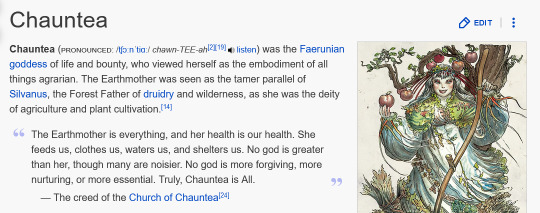
Water Cleric as another add on to the theme of Civilization and Nature, connected to an element of the natural world that is also essential to humanoids, cities are built alongside it, the cradle of civilization etc.
top of the head PC name is Nile for obvious reasons.
I think the place I’d most like to use this PC is Tomb of Annihilation, the survival campaign module where you deal with the jungle, disease, apex predators and a curse that hurts those risen from the dead unnaturally.
#dnd#nature cleric#antinature nature cleric whose lawful good just feels really fun to me#in a stupid but wait it makes sense way#long post#this is the autism I often spare tumblr and only use to irradiate my friends in dms
38 notes
·
View notes